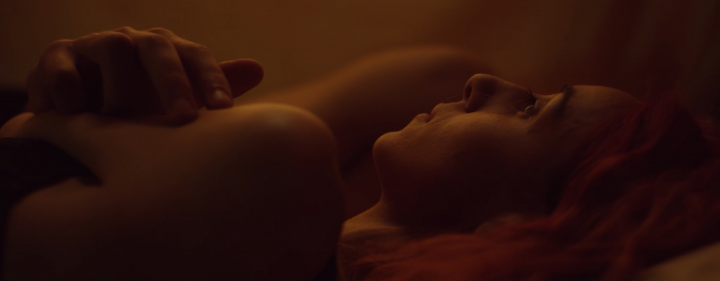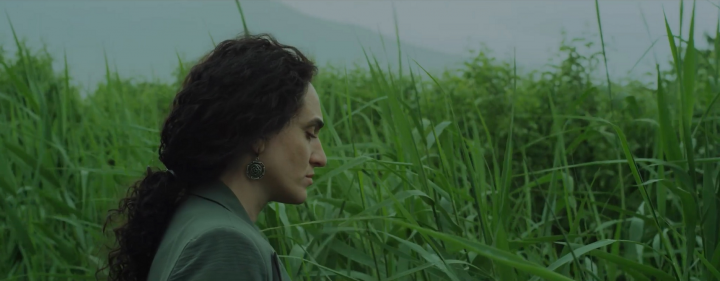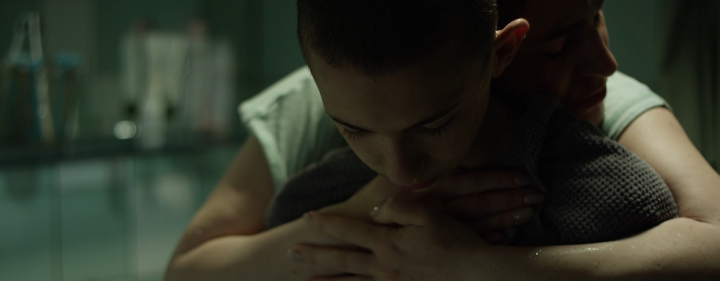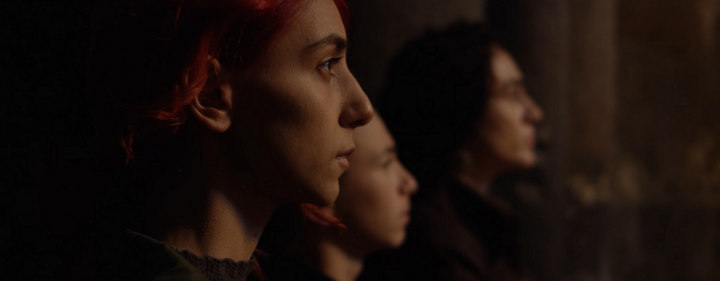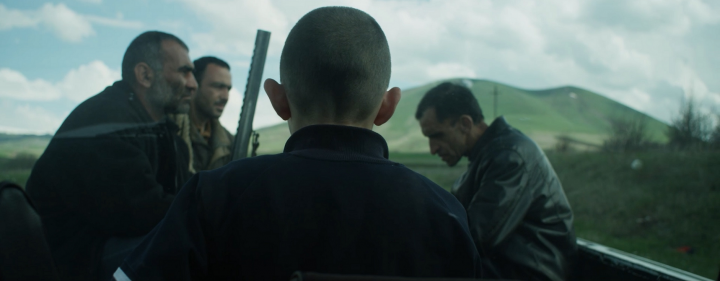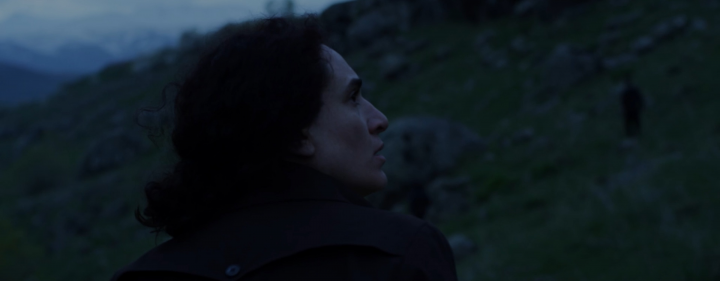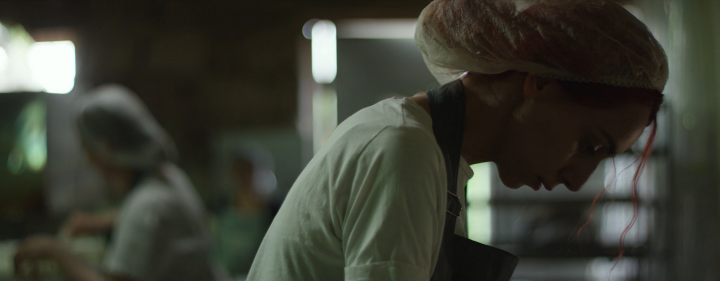Thus Spoke the Wind
original title: Այսպես ասաց քամին
2025, 92 min., color, Armenian
COUNTRY: Armenia
PRODUCTION : BUDGET : 36 000 euro
FESTIVALS & AWARDS
CAST
Albert Babajanyan, Lusine Avanesyan, Annika Abrahamyan
CREW
Director : Screenplay : Maria RigelCinematographer : Ayrat Yamilov
Producers : Ernest Bagdasaryan, Maria Rigel, Gala Minasova
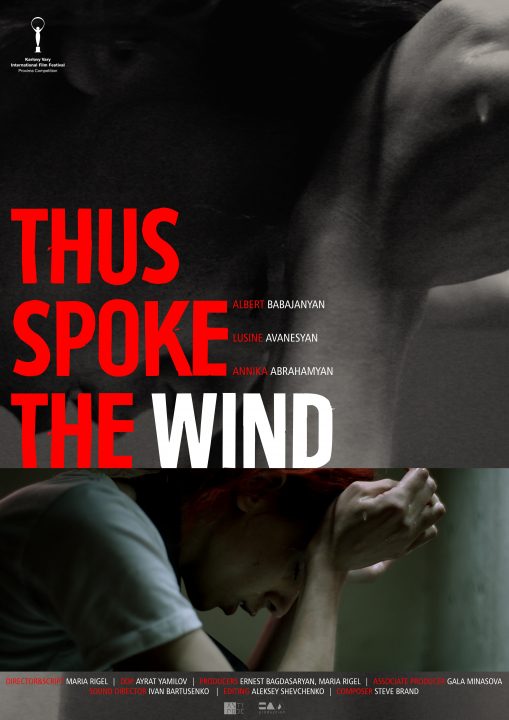
COMMENTS
FESTIVALS: Vancouver IFF 2025, Silk Road IFF 2025, European Film Festival Palić (Parallels and Encounters) 2025, Karlovy Vary IFF (Proxima Competition / World Premiere) 2025
DIRECTOR’S NOTE: The film continues the cultural traditions of Armenian auteur cinema. The film featured local actors, most of whom were unprofessional. The documentary style of the film is combined with the bright color poetics of Parajanov’s cinema, which reflects the modern world of Armenia, the clash of traditions of the past and present. The film crew consists of local filmmakers and immigrants from the post-Soviet countries.
The soundtrack to the film was created by American composer Steve Brand. His magical music perfectly emphasizes the spirit of modern Armenian aesthetics.
SYNOPSIS
Hayk, withdrawn and aloof child, lives on a farm with his aunt Narine. Local teenagers mock him, deeming him strange and weak. Narine cares for him as if he were her own son. After a lengthy stay in another country, Hayk’s mother Anahit, a beautiful woman in her late twenties, returns to the farm. The locals openly condemn her behavior because she does not follow the rules of society. Narine, unable to forgive Anahit for the shame brought upon her with her behavior, decides to take
revenge.
PRESS
Rigel builds on the tradition of contemporary social realist cinema with a fresh and singular infusion of a culturally distinct grammar that solidifies her standing as a bold new voice from the region. – VIFF
While the characters struggle for words to express wounds clearly felt beneath the surface, director Maria Rigel seeks images to convey them… The film is captured in a way that translates their speechlessness into a striking, symbolic imagery, one that conveys the distance between the characters while simultaneously lending them individual depth. In the atmospheric sound design, the eponymous wind is just as present as the sound of the duduk, a type of oboe considered a symbol of Armenian national identity. – Susanne Mohr, FilmFestival Cottbus
Maria Rigel’s film is a visually compelling, if underwritten, work that explores resistance to change in an Armenian village. – Veronica Orciari, Cineuropa
Maria, who has sought to emulate the eminent Russian auteur Sergei Parajanov’s film making style and cinematic technique also populates her film with visually striking frames providing a feel of surrealism, religious iconography (a scene in the film has the statue of Jesus Christ) folklore melded with historical contexts, makes the film, visually compelling auteur work. – S Viswanath, Medium
„За мен беше важно да създам филм, в който реалност и символика се преплитат. В киното ме интересува не просто какво се случва, а какъв смисъл може да бъде уловен отвъд видимото. Затова филмът е изграден върху условност, не върху натурализъм. Филмовият език е подчинен на идеята да предаде вътрешния свят на едно дете, което възприема реалността фрагментарно, болезнено, но има чувство за справедливост. Затова структурата е асоциативна. Не давам обяснения къде се е губила майка му и това е умишлено. Не исках зрителят да знае всичко, защото не е необходимо.” Maria Rigel to Pavlina Jeleva, Kultura.bg
This elegantly-shot film boasts melancholic images of the Armenian landscape. DoP Ayrat Yamilov has a preference for dark and cold colours, and this helps to emphasise the soullessness of human beings…On the other hand, American composer Steve Brand establishes an ominous mood with with evocative hustling and distant thruming. Black-and-white thermal images (aka as heat vision) seem to suggest that human beings are highly vulnerable, that there’s nowhere to hide, and also that life is just a hunting game. – Victor Fraga, DirtyMovies
Steve Brand’s music feels mystically attuned to the natural spirit and atmosphere of Armenia. It opens a doorway into the unconscious and allows you to feel the energy of a place. It doesn’t function in the film as a leitmotif that marks or defines emotion; rather, it has a deeper purpose. It helps immerse the viewer in the emotional state that the characters are going through. There’s also something irrational in his sound, something elemental, and that was essential because my characters are deeply intertwined with nature. His music evokes that bond in a subtle, intuitive way. – Maria Rigel to Veronica Orciari, Cineuropa
There’s a dynamism to Rigel’s direction that makes these sequences watchable, even when it appears not too much is occurring on-screen, imbuing even the most mundane activities with a sense of visual purpose. The performances feel naturalistic without being overly mannered. There’s a sense of lived-in authenticity that suggests real familiarity with their characters’ inner worlds…Rigel clearly has a vision for what she wants to achieve, and there are glimpses throughout the film of genuine insight into human connection and isolation. The way characters move through their environments suggests themes of displacement and belonging that could be quite powerful if given more focused exploration. – H.M.Ryn, DirtyMovies
Atmosphärisch dicht und ästhetisch ausdrucksvoll schafft Maria Rigels differenziertes Debüt-Drama…einen markanten Beitrag zu Armeniens zeitgenössischem Autorenkino…Coming-of-Age-Erzählung und kulturelle Momentaufnahme einer Gesellschaft im Umbruch verweben sich zu einem systemkritischen Porträt von leiser Intensität. Auch wenn die Charaktere mehr Archetypen als individuelle Persönlichkeiten darstellen, verleihen kraftvolles Schauspiel und psychologische Präzision ihnen ebenso viel Eindringlichkeit wie der filmischen Fabel.- Lida Bach, Moviebreak.de
…It compels the viewer to seek their own interpretations or meanings, and simultaneously, though its form, it is rather mesmerising experience be it though the visual aspect, but I would also definitely emphasize the very strong auditory aspect both in the realm of music, as well as sound as such, in which the motif of wind appears very clearly, which is in film’s title as well. – Curator’s choice Proxima KVIFF TV
“The main emotion in this film is the quiet sadness. And It’s really hard to explain it in the words, but I can say that it looks like the sky after the rain.” Maria Rigel to KVIFF TV


